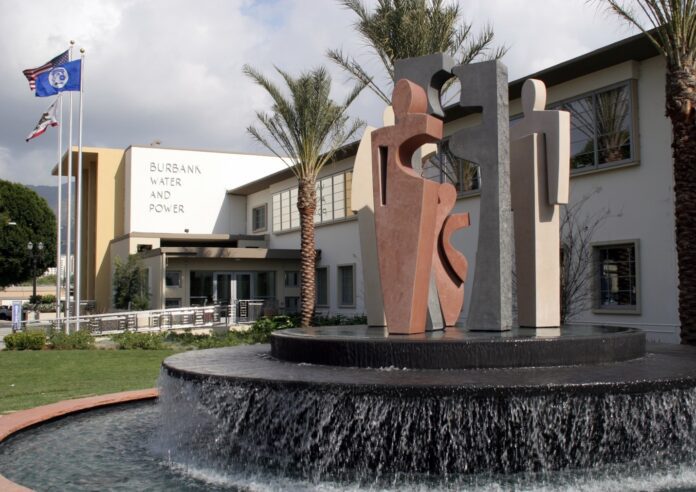Water is essential to daily life, but few people realize the journey it takes before reaching their taps. In Burbank. Every drop of drinking water originates from hundreds of miles away, making Burbank uniquely dependent on external suppliers. The cost of importing this water continues to rise, and it is important to understand the factors driving these costs and how they may impact our community in the future.
Where Does Burbank’s Water Come From?
Unlike other cities that can tap into local rivers or lakes, Burbank’s drinking water is entirely purchased from the Metropolitan Water District of Southern California (MWD). This imported water originates from two sources – water from the San Francisco Bay Delta, which includes runoff from melting snow in the Northern Sierra Nevada mountains, and the Colorado River. This water travels through an extensive network of reservoirs, and hundreds of miles of aqueducts and pipelines.
Because Burbank lacks direct access to natural water sources, our community relies on a unique system of groundwater storage. However, this groundwater is not freely available for use. BWP must first purchase and spread imported water before extracting it from the groundwater basin.
To maximize our limited supply, BWP produces approximately four million gallons of recycled water daily for non-potable purposes uses such as irrigating school fields, parks, and city properties, and operating the Magnolia Power Plant. Additionally, BWP supplies recycled water to LADWP in exchange for groundwater that we can treat and then drink.
Why Are Water Costs Increasing?
Several factors are driving up the cost of imported water. MWD has announced price increases in 2025 and 2026, reflecting the growing expense of delivering water to Southern California. BWP is expecting to pay up to 21% more for imported water in 2026 compared to 2024. Learn more.
Climate change and unpredictable drought cycles further complicate long-term water supply planning, requiring additional investments in storage and conservation measures to maintain reliable supplies.
Additionally, maintaining the infrastructure needed to transport and purify Burbank’s water is a significant expense. Rising costs for energy, labor, and materials also contribute to the overall increase in the cost of providing clean and reliable drinking water.
How Much Water Does Burbank Have?
Because we have no water rights and must purchase 100% of our water, we must make every drop count. This means taking advantage of surplus imported water when we have rainy winters and storing it as groundwater for use later, so that Burbank is prepared when imported water isn’t available.
BWP actively manages groundwater storage to prepare for dry years, but capacity is limited:
- Current groundwater storage: Approximately 23,000 acre-feet. That’s enough water to cover 23,000 football fields in one foot of water.
- Annual usage: About 11,000 acre-feet per year.
- Total storage capacity: 35,000 acre-feet.
Recent MWD infrastructure projects and environmental challenges have impacted BWP’s ability to replenish its groundwater reserves as quickly as planned. Issues such as invasive species and necessary dam releases have affected water availability, highlighting the importance of proactive water resource planning and conservation efforts.
What Does This Mean for the Future?
With the increasing costs of imported water and ongoing challenges in water management, BWP continues to explore long-term solutions to balance affordability and sustainability. We’re focusing our efforts on diversifying our water portfolio with new local water supply through Direct Potable Reuse (DPR) that treats recycled water to drinking water standards, and a desalination project using deep ocean water technology, as well as implementing conservation programs to reduce overall demand.
These projects will prepare our community for the development of new housing units in Burbank and the challenges of managing water resources in a changing climate.
How You Can Help
Even though recent years have brought higher-than-average rainfall, conservation remains critical. Burbank residents and businesses play a vital role in maintaining a sustainable water future by:
- Using water efficiently and reducing unnecessary waste.
- Taking advantage of BWP’s rebate and conservation programs.
- Utilizing BWP’s WaterSmart system to monitor water usage.
- Staying informed about local water management efforts and future planning.
Looking Ahead
Burbank’s water future depends on a combination of strategic planning, responsible water use, and continued investment in infrastructure and sustainability efforts. By staying informed and proactive, the community can work together to ensure a stable and secure water supply for years to come.
To meet these challenges, BWP is proposing a water rate increase of 14% beginning January 1, 2026, and an additional increase of 14% beginning January 1, 2027. Learn more.
For more information on BWP’s water sources and ongoing initiatives, visit our website or contact bwpconservation@burbankca.gov.





















